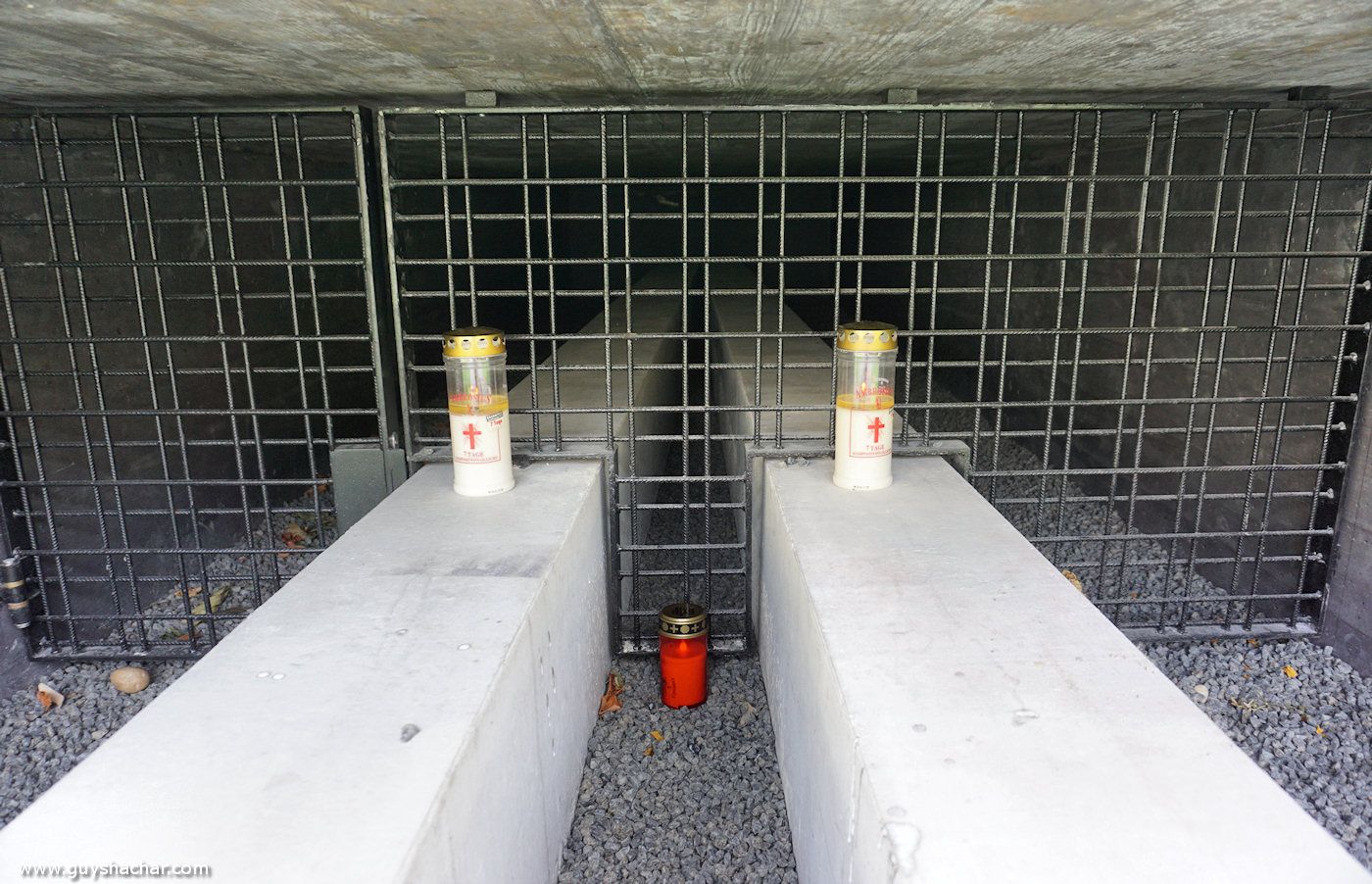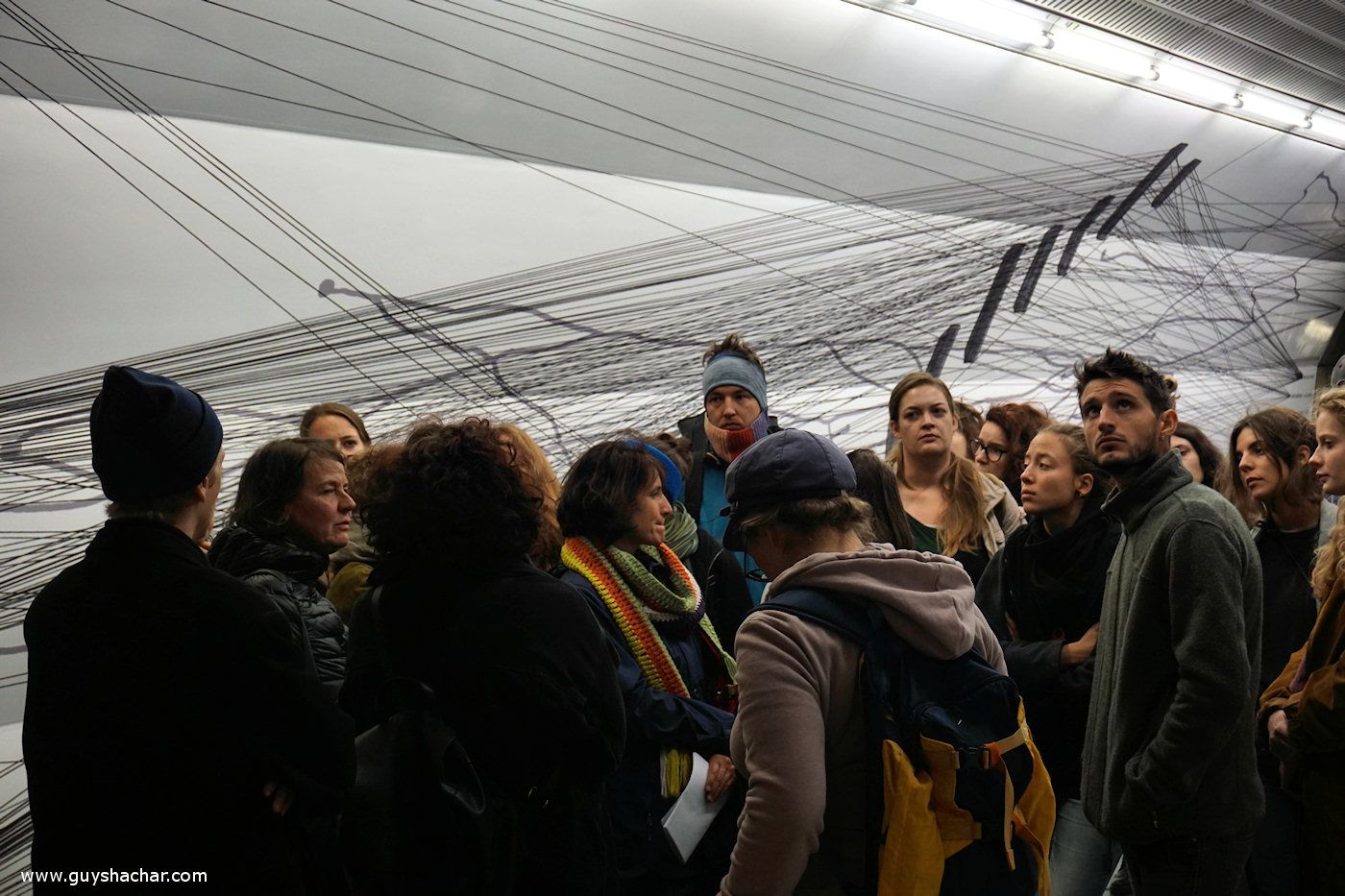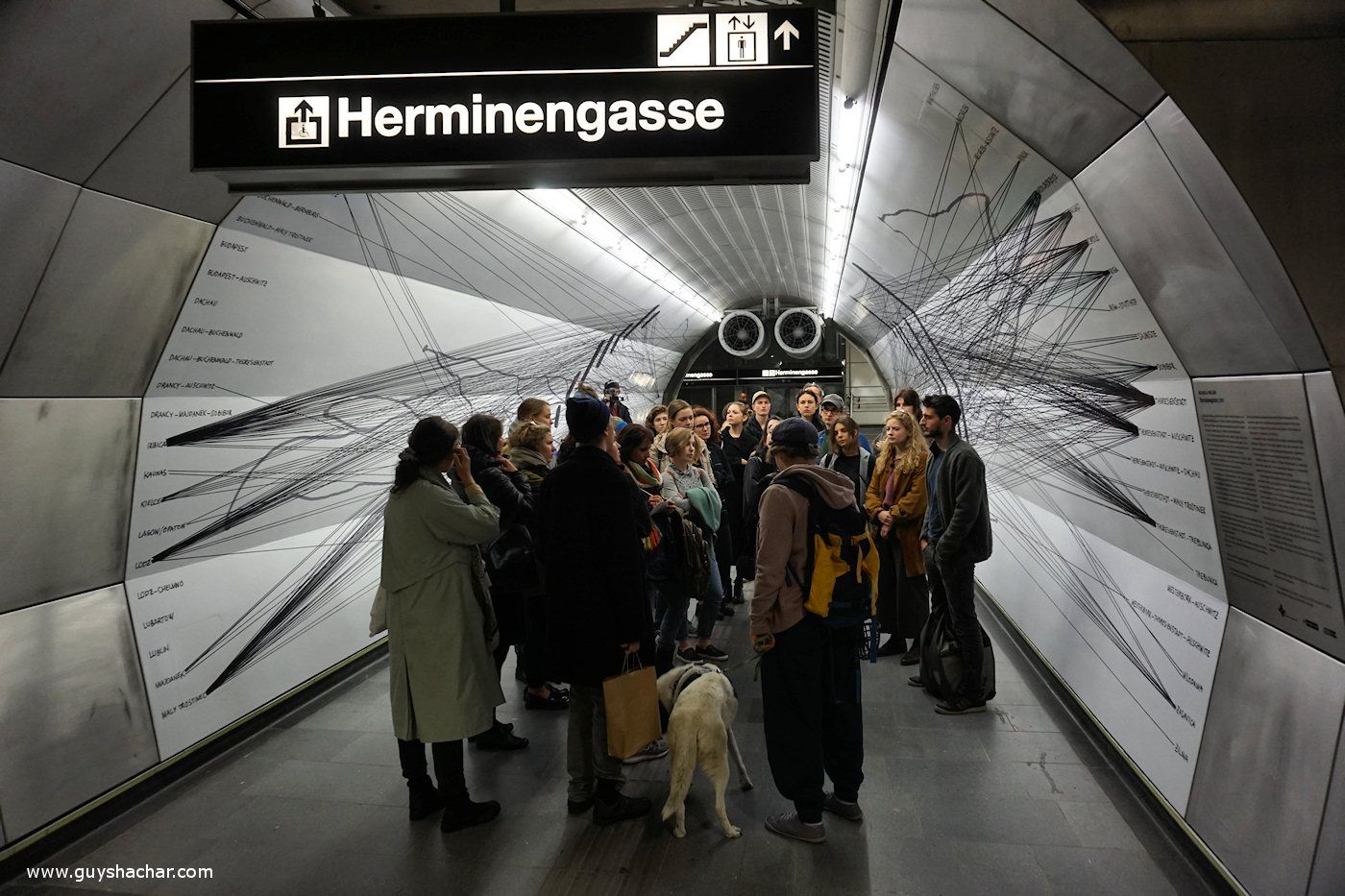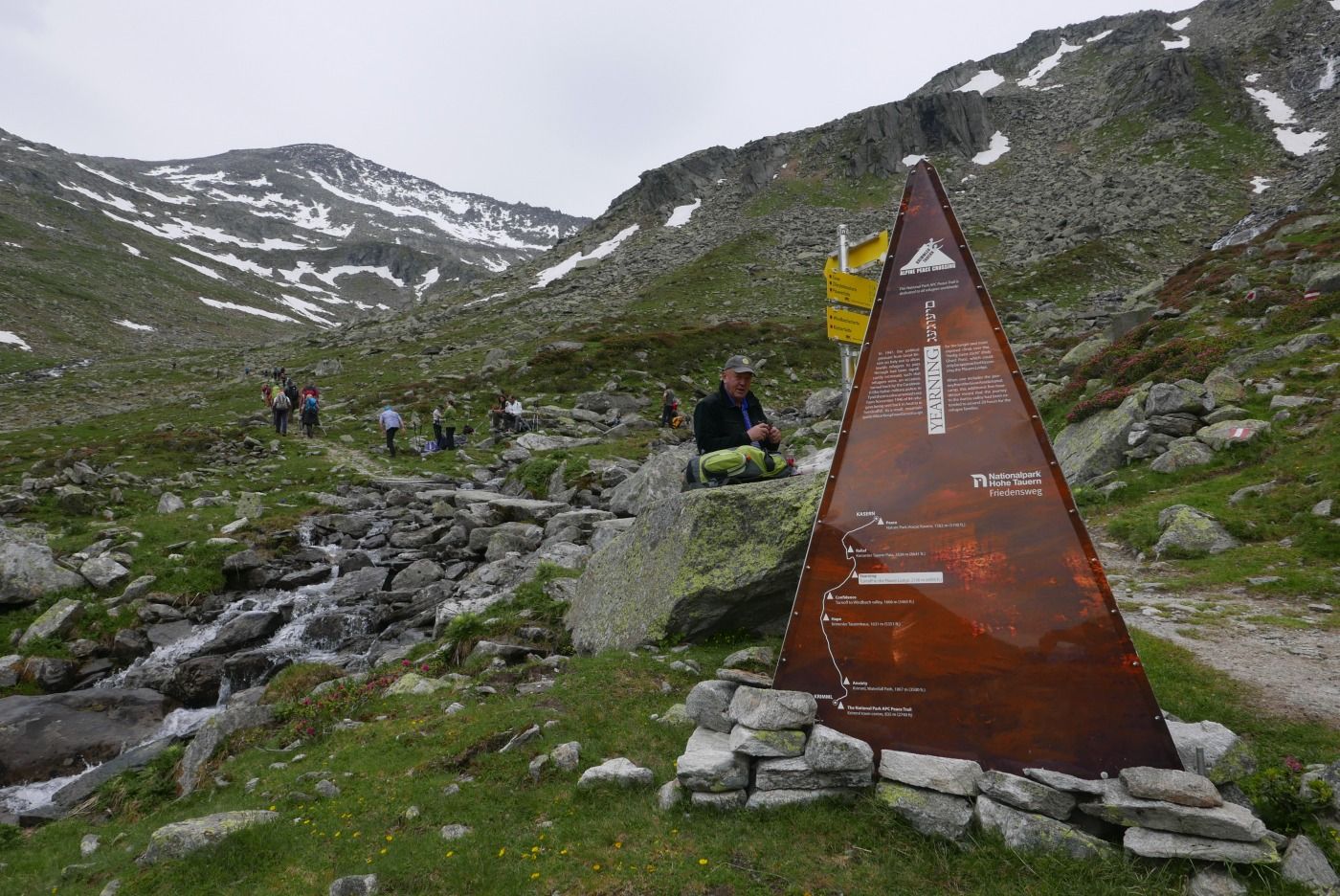Lately, inspiring projects can be seen across Austria, commemorating the fate of Jewish people during and following World War II. This is a refreshing change, as the Holocaust events in general and the life of Jewish people in Austria at that time in particular, were not common in the sociohistorical discourse in Austria. Such projects, located in public domain, add meaning to public areas threatened by technology mediated experiences.
Aspang former railway station – A silent memory to troubled times in a renewing area of Vienna
In September 2017, a memorial to the 47,035 Jewish men and women deported from Aspang Railway Station was inaugurated in Leon Zelmann Park in Landstraße, the 3rd municipal District of Vienna. The Station was demolished in 1977, making space to a renewing residential area.
The memorial was designed by the artist duo PRINZpod, who won an artistic competition, and is located on the site of the former railway station.
The project was funded and managed by the institution „KÖR – Kunst im öffentlichen Raum” (“Public Art Vienna”). KÖR is “committed to breathing new life into the city of Vienna’s public space with permanent or temporary art projects… The projects have to be publicly accessible within the City of Vienna, where art can be experienced by everybody… The public sphere should present itself as an accessible field in which democracy, opinion forming, and sociality can unfold their effects.”.
This approach is crucial in an era in which authentic urban experiences – from shopping to culture – are being replaced by mediated mundane actions done using technological devices at home.
More info about this project here.
Vienna U-Bahn station – passing by you learn about those who passed away
Another project by KÖR is the art installation at Schottenring U2 subway station by the artist Michaela Melián, opened in October 2017. Melián’s work is located in a tunnel leading to Herminengasse exit. It is dedicated to 800 Jewish residents of Herminengasse who were deported by the Nazis during WWII. Melián conducted a research and identified 1322 Jewish people who lived on this street. Their residences are represented by black bars. On the edges, names of concentration camps are listed. Each line between a building and a concentration camp represents a story of one Jewish person. Passing through the tunnel, one may follow the threads of life of these Jews.
I passed by this station by chance on the day the project was inaugurated. Melián was there with a group of local students, who caught my attention.
More info about this project here.
Alpine Peace Crossing – re-creating a hike, promoting friendship and care for those on the flight
For 10 years, “Alpine Peace Crossing” (APC) has been commemorating events related to Jewish people escape through Austrian land towards the Land of Israel following the Holocaust. Dr. Ernst Löschner, founder of APC, discovered by chance a story about 5,000 Jews who crossed the 2,634m Krimmler Tauern mountain pass from Austria to Italy on their way to Israel. In summer 2007, the first “Alpine Peace Hike” took place, where hundreds of people, including Jewish survivors who crossed the pass in 1947, participated in a reenacting of the heroic cross. “Alpine Peace Hike” became an annual event, and the whole Krimml area is now familiar with the story – I myself heard about it from a local school headmaster whom I met while hiking in the mountains above Zell-am-See.
Plaques in the form of pyramids now tell the 1947 story along the path across the Krimmler Tauern pass.
Another APC initiative was a commemoration site founded in “Givat Avoda” transition camp in the town of Saalfelden. Occasional commemoration ceremonies are held there, with the participation of Austrian army units that now use the camp.
The commemoration at Saalfelden and Krimml tells one story of many about the activities of the “Briha” (“Flight”) underground Jewish organization, who worked for gathering Jewish refugees after the Holocaust. In October 2017, a grove with 49 trees was inaugurated in Hohe Tauern National Park, on the former path of the Jews, commemorating those who crossed the Krimml pass and those who have been assisting keeping the memory alive.
All these commemorative aspects get a form in public space, thus enabling people to stumble upon and learn about the historical events while passing by the area.
Interactive theater – bringing historical events to a higher level of authenticity in a deeply emotional way
Teatro Caprile brought the commemoration to a higher level of authenticity by creating a “Walking Theater”, where actors play scenes of historical events, while the stage is the real places where these events took place, and the audience walks together with actors along the path of events.
“Ins Gelobte Land – Eretz Austria” was presented in June 2017, telling the story of the Jewish flight over the 2,634m Krimmler Tauern pass in a highly emotional way.
These projects, varied in scale and located in various types of places – from remote mountainous areas to bustling spots in Vienna, demonstrate a healthy process of Austrian society dealing with dreadful past events and bringing them to real public domain on broad daylight, literally.





One Response
Golda Tauber Toronto Ontario
I was born in early 1947 in this camp in Saalfelden. My father did not speak too much of the Holocaust but he did say that he carried me in his jacket through the Alps in Austria to Torino in Italy. It is wonderful that I and others children of Holocaust survivors can now look up this information and that all people will know what happened to the Jews in the WW2